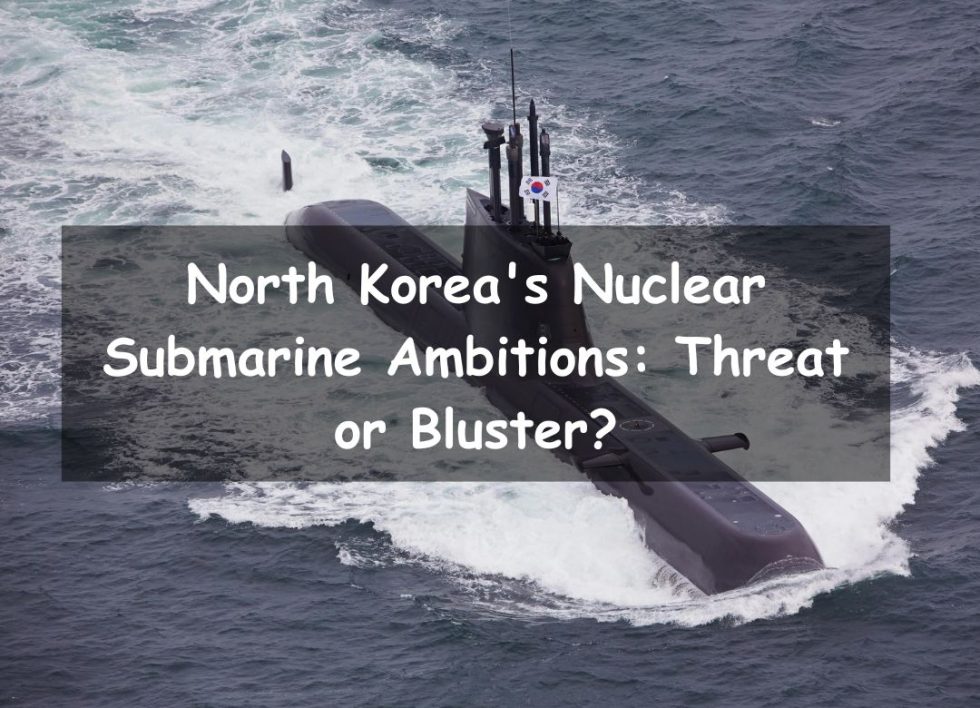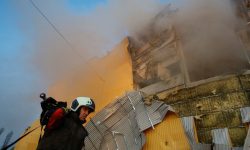
As a country with an arsenal of nuclear weapons and a history of provocative actions, any announcement by North Korea related to expanding their military capabilities understandably raises alarm. According to recent reports from North Korea’s state media, Kim Jong-un has announced plans to retrofit existing submarines to carry nuclear weapons, heralding it as the start of a “new chapter” for the nation’s navy. While these claims may seem to represent an escalation of the threat posed by North Korea’s nuclear program, a closer examination of the details provided suggests this may be more bluster than actual progress. Before becoming overly concerned about the prospect of nuclear missile-armed submarines prowling international waters, it is worth analysing what is actually known about North Korea’s submarine fleet and nuclear capabilities to determine how realistic their ambitions really are.
North Korea Unveils New Submarine Capable of Nuclear Strikes
North Korea’s recent unveiling of a new submarine allegedly capable of launching nuclear missiles has raised concerns about the threat Pyongyang’s naval forces could pose. According to North Korean state media, leader Kim Jong Un inspected a newly built submarine that will soon begin sea trials, though doubts exist about its operational status.
A Credible Threat or Hollow Promises?
While North Korea claimed the submarine is capable of carrying and launching nuclear-armed ballistic missiles, experts are sceptical it represents a fully operational vessel ready for deployment. Its features suggest it may be better suited for testing missiles than engaging in combat. However, if functional, such a submarine would provide North Korea a hard-to-detect platform for nuclear strikes and complicate defence planning for the U.S. and its allies.
North Korea’s submarine fleet is largely obsolete, consisting primarily of outdated diesel-electric submarines with limited range and armament. Developing nuclear-powered submarines armed with ballistic missiles would significantly enhance Pyongyang’s second-strike capability and counter U.S. naval power in the region. However, North Korea faces major technical hurdles in producing seaworthy nuclear submarines, suggesting their ambitions outpace their capabilities.
While the new submarine’s abilities remain uncertain, its unveiling highlights North Korea’s goal of building undersea deterrent against its adversaries. The U.S. and South Korea must closely monitor developments to determine if North Korea can achieve a credible sea-based nuclear deterrent or whether their efforts will remain aspirational. North Korea’s tendency to exaggerate its military prowess calls for scepticism, but the potential threat from even a limited submarine-launched nuclear arsenal means this latest revelation warrants concern.
Kim Jong-Un Declares Shift to Nuclear Deterrent Strategy
Need for Deterrence
Some analysts argue a strong response is needed to deter North Korea’s provocations, whether or not the submarine threat is genuine. Showing weakness could embolden Kim to take further aggressive actions. The US, South Korea, and Japan may need to demonstrate their military prowess through joint naval exercises or by deploying advanced submarines and anti-submarine forces of their own. Strong sanctions and diplomatic pressure to curb North Korea’s nuclear and missile programs should also remain in place.
While North Korea’s new “nuclear” submarine seems more smoke and mirrors than an actual menace, the US and its allies must take proactive actions to counter Pyongyang’s pattern of brinkmanship and discourage future provocations. A policy of strategic patience will not suffice. Constant vigilance and a willingness to negotiate are required to curb this looming threat, fanciful or not.
What Does This Mean for the Future of Nuclear Proliferation in Asia?
If North Korea successfully develops nuclear-armed submarines, it would represent a dangerous escalation in its nuclear capabilities and ambitions.
Increased threat of nuclear attack
North Korea’s possession of nuclear submarines would enable surprise nuclear attacks and second-strike capabilities, increasing the threat of nuclear conflict. Submarines could approach the Korean peninsula or Japan undetected and launch nuclear missiles without warning. This unpredictability heightens the risk of miscalculation during a crisis.
Proliferation of nuclear technology
North Korea may share information or technology related to nuclear submarines with other nations, accelerating the spread of nuclear weapons. Pyongyang has a history of exporting conventional arms and missiles, and is unconstrained by non-proliferation treaties. Nuclear submarine technology in the hands of unstable regimes or terrorist groups is a harrowing scenario.
Power projection
Nuclear submarines would boost North Korea’s naval power, allowing it to threaten its neighbours and assert control over surrounding waters. While its existing submarine fleet is outdated, nuclear submarines would enable longer deployments and give North Korea a more formidable naval presence, especially as tensions rise in the region. However, there are reasons to doubt whether North Korea can achieve operational nuclear submarines in the near future. Its program likely faces technical hurdles, financial constraints and a shortage of expertise.
Responses From the US, South Korea and Regional Allies
The unveiling of North Korea’s so-called “tactical nuclear attack submarine” has elicited mixed reactions from the international community. The US and South Korea have expressed scepticism about the vessel’s operational capabilities, while regional allies are concerned about escalating tensions.
Doubts About Capabilities
US and South Korean officials have questioned whether the submarine is fully functional or merely a propaganda tool. Satellite imagery indicates the sub is an old Romeo-class diesel-electric submarine built in the 1950s, which North Korea acquired from China in the 1970s. Despite claims of upgrades, the Romeo-class was obsolete decades ago. The US and South Korea believe the sub would be no match for their technologically superior navies.
Heightened Tensions
North Korea’s nuclear ambitions and weapons tests have long exacerbated tensions in East Asia. Kim’s declaration of a “new chapter” for the navy and photos of him overseeing the submarine’s systems have stoked fears of an underwater-launched nuclear missile, even if the capabilities are doubtful. Regional allies like Japan view North Korea’s actions as destabilizing and believe a show of force risks miscalculation that could spiral into conflict.
Conclusion
As the geopolitical tensions continue to escalate in the Korean peninsula, the world watches with bated breath wondering whether Kim Jong-un’s latest announcement is an empty threat or signals dangerous escalation. While North Korea’s submarine capabilities and nuclear weapons program separately pose security concerns, their combination magnifies the threat exponentially. Whether or not the new ‘tactical nuclear attack submarine’ is fully operational, its mere existence highlights the precarious situation and fragility of peace in the region. The international community must come together to discourage further nuclear proliferation and provocation from the North Korean regime through strict sanctions and diplomacy. You must remain vigilant and continue to follow developments closely in this complex and high-stakes situation.









